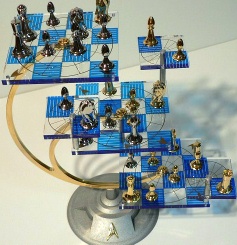
Hello friends, well people I know, I have something to tell you. We friended each other on a social site a few months ago. Last weekend, I might have unfriended you or unsubscribed to your list. I’ve been talking to people who’ve been doing the same thing.
The blogosphere has grown bigger and more social than most of us have time. It’s a fact. As much as we’d like to stay friends with everyone, we all have a threshold of noise. When waves of information and conversation pour over our threshold, we need to raise the wall and reasses where we’re spending our social time.
In my conversations with social networking people I find more like me than ones who are not. Iââ¬â¢ve asked them what leads them to “unfriend,” or “unsubscribe.” It seems that we have the same reasons for quietly bowing out of your informational stream.
Itââ¬â¢s time we let you know what they are.
10 Reasons Why We Unsubscribe or Unfriend You
We all approach to online conversations differently, and we all have different thresholds for noise. Unfriending people from your social stream can feel like breaking up. It’s good to keep in mind that a slew of variables can mitigate the choice of who stays on our “following” list.
This list couldn’t be all of the reasons someone might want to stop seeing you their stream. It’s only 10 reasons Iââ¬â¢ve heard over and over again.
- I don’t know you. ahem. Maybe we met in passing and added each other. But we haven’t said a word since.
- You don’t @folks who tweet you. Your tweets are clever remarks @yourcircle of twitterbuds. Following you seems like being a fangirl.
- You talk @everyone about anything!! I’m jumping over you to see what other people are saying.
- You like to argue. I don’t.
- You talk about things I’m not interested in. We get along great, but the subjects you tweet aren’t my life’s passion.
- You tweet as if you don’t know people are listening, as if your life is a stage and your thoughts are high drama.
- You only plug your blog posts. That’s not conversation. That’s twitterfeed.
- You talk . . . ahem (whine) . . . about all of the work you have to do, but you twitter all day.
- I’m only hearing half of your conversations, because I don’t follow your 1000 other friends. .
- You constantly discuss your social media clients, but haven’t used the @ sign ever.
- You only talk about yourself. I’ve been gone for eleven months and you just noticed yesterday.
When the list we follow is small and focused the direction that we are, the conversation we attract is rich and compelling. It’s filled with opportunities for connection and collaboration. The more we know about who we follow and why we follow them, the more we can build a supportive network of friends and colleagues.
How do you decide who you’ll follow? Is it time to slim down your list?
–ME “Liz” Strauss
Work with Liz!!
